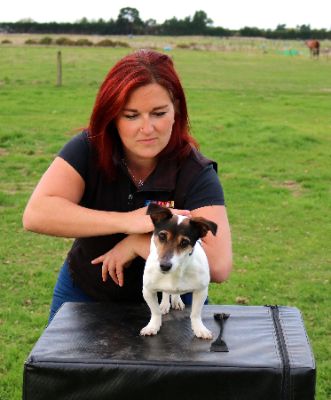How Does A Diversified Vet Treat Animals?
Examining how the entire body of an animal moves and applying a wider lens to physical issues with a focus on prevention as well as treatment is how Sara Bagheri of Zoominals describes her approach to treating animals.
“A diversified vet has all the training and qualifications of a traditional vet which provides us with a scientific and technical background. We look at the whole animal and consider how all systems and disease processes could be related.
“We use biomechanics, chiropractic, and physical therapies to analyse how the body is moving and this can often point towards things that are contributing to the issue, especially for problems which are ongoing and haven’t been resolved in a traditional setting.”
Sara, who is one of a handful of diversified vets in New Zealand, says an example of this is when a horse’s movement is abnormal or asymmetric, yet the underlying cause could be a metabolic problem, or external factors such as the saddle or bridle.

Effective chiropractic treatment can result in immune system improvements as the immune system is controlled by the nervous system which is the system most affected by chiropractic adjustments, and the results of treatment are not confined to the musculoskeletal system.
Science and technology still play a large role in diversified veterinary care and Sara describes the two as complementary. She is partnering with an American veterinary orthotics and prosthetics company to provide a new lease of life for animals who have lost limbs or who require customised braces for orthopaedic conditions.
“These are custom-made for each pet and include dog braces for knees, ankles, elbows and wrists. I chose to partner with this company because their values match closely with mine as they are focused on improving the quality of life for animals by reducing pain and increasing mobility.”
Sara says the vet industry is changing from a focus on treating isolated problems to a more rounded approach which looks at overall health and wellbeing. She views this as a reflection of how humans are examining their own health through a broader lens.
“As we have started to look at our own wellbeing in a holistic way, we’re also looking at health and wellbeing expectations for our animals in a new way too.”
A diversified approach can provide answers for unresolved animal health issues such as the 18-month old giant breed of dog which Sara provided vaccinations for and then discovered the cause of an unexplained gait issue which had been affecting the dog since it was a puppy.
“The owner was quite concerned and hadn’t been able to find the cause of the problem. The dog walked slowly with its back feet and trotted with its front feet. I videoed the dog’s movements and then examined the biomechanics.”
Sara suspected that the dog had Wobbler Syndrome, a disease of the neck which affects larger dogs by compressing the spinal cord and causing nervous system defects which can impact mobility and cause extensive pain; in this case expressed as behavioural changes.
The dog had an MRI scan which confirmed Sara’s suspected diagnosis.
“It was reassuring for the owner to have some answers after so much uncertainty. I am a big believer in a team approach to animal health and enjoy partnering with a range of experts to provide the best possible solutions for both animals and their owners.”


 Gordon Campbell: On Winston Peters’ Battle Against The Phantom Legions Of The Woke
Gordon Campbell: On Winston Peters’ Battle Against The Phantom Legions Of The Woke ActionStation: Economists, Campaign Groups Hit Out At PPP’s Labelling Them ‘Ideological, Reckless’
ActionStation: Economists, Campaign Groups Hit Out At PPP’s Labelling Them ‘Ideological, Reckless’ Greenpeace: Luxon’s Investment Claims Undermined By Breaches Of Free Trade Agreements
Greenpeace: Luxon’s Investment Claims Undermined By Breaches Of Free Trade Agreements Living Wage Aotearoa: Government Cleaners, Security Guards, And Caterers Counting On NZ First
Living Wage Aotearoa: Government Cleaners, Security Guards, And Caterers Counting On NZ First  Environmental Defence Society: Infrastructure Summit Should Prioritise Environmental Outcomes
Environmental Defence Society: Infrastructure Summit Should Prioritise Environmental Outcomes Green Party: Just Six Government MPs Needed To Pass Unlawful Occupation Of Palestine Sanctions Bill
Green Party: Just Six Government MPs Needed To Pass Unlawful Occupation Of Palestine Sanctions Bill Ngāti Manuhiri Settlement Trust: Iwi Welcomes Progress On Northland Expressway
Ngāti Manuhiri Settlement Trust: Iwi Welcomes Progress On Northland Expressway


